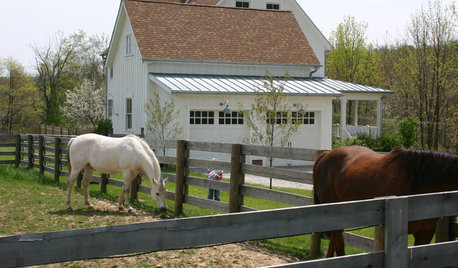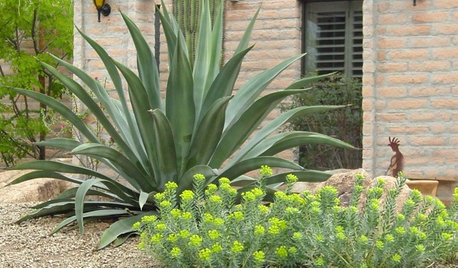Do my roses have Verticillum Wilt?
melissa_thefarm
16 years ago
Related Stories

PLANTING IDEASGreat Garden Combo: Rose + Clematis for Small-Space Impact
We all need somebody to lean on. And when a rose supports a climbing vine, the results can totally transform a small garden
Full Story
DECORATING GUIDESGroom Your Rooms With Kentucky Derby Decor
It's time to run for the roses! Celebrate the Kentucky Derby at home with decorative touches that evoke the Bluegrass State
Full Story
COLORBest Ways to Use the Soft Yellow Color of 2014
You may fall for PPG Pittsburgh Paints’ Turning Oakleaf if you like your hues warm, mellow and cheery
Full Story
GARDENING GUIDESHow to Spot a Drought-Tolerant Plant
Label? Who needs a label? Learn the characteristics of plants that can thrive in hot, dry conditions to help you pick the right ones
Full Story
GARDENING GUIDESPacific Northwest Gardener's August Checklist
Deadheading perennials, cutting raspberry canes and preparing for the onion harvest keeps Northwest gardeners busy in August
Full Story
GARDENING GUIDESHouzz Call: What’s Your Favorite Backyard Beauty?
The simple, honest daisy is this writer’s go-to garden flower. We want to hear which plant, flowering or otherwise, gives you special joy
Full Story
GARDENING GUIDESCalifornia Gardener's June Checklist
Update your hydrangeas, catch up on tomatoes and more ways to enjoy your California garden in June
Full Story
EDIBLE GARDENSSummer Crops: How to Grow Tomatoes
Plant tomato seedlings in spring for one of the best tastes of summer, fresh from your backyard
Full Story
HOUSEPLANTSHow to Force Amaryllis Bulbs Indoors
Enjoy vibrant red blossoms even as gardens turn snowy white, by teaching this hardy repeat performer to ignore the calendar
Full Story
FEEL-GOOD HOMEYour Best Winter Accessory for the Kitchen
Flowers and foliage will bring cheer to your kitchen even in the dead of winter
Full StorySponsored
Industry Leading Interior Designers & Decorators in Franklin County
More Discussions








Embothrium
mike_rivers
Related Professionals
Parole Landscape Architects & Landscape Designers · Bedford Heights Landscape Contractors · Bethel Park Landscape Contractors · Braintree Landscape Contractors · Downey Landscape Contractors · Dunwoody Landscape Contractors · East Chicago Landscape Contractors · Fort Worth Landscape Contractors · North Plainfield Landscape Contractors · Peachtree City Landscape Contractors · Streamwood Landscape Contractors · Greenfield Landscape Contractors · Eastlake Landscape Contractors · Columbus Siding & Exteriors · Rahway Siding & Exteriorsmichaelg
stefanb8
michaelg
berndoodle
jerijen
sherryocala
michaelg
ceterum
jerijen
berndoodle
michaelg
berndoodle
jerijen
michaelalreadytaken
melissa_thefarmOriginal Author
RosariumRob
Deborah lippitt